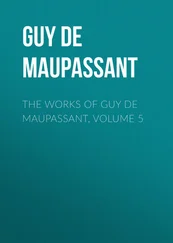During illness and starvation, the fat of the body shrinks, while in times of health and plenty, it expands. Until comparatively recently, fat was often associated with health and riches. Some Andean Indians still associate the fat with the spirit, and thus when a man ‘fades away’ in chronic illness or starvation, his spirit fades away too, often thought to have been stolen by a sorcerer. Fat, blood and air are the basic body fluids in traditional Andean physiology, and fat is the energy principle distributed from the heart via a system of channels and rivers mirroring the hydraulics of the Andes. This imaginative physiology is indeed partly based on an analogy of the body with the mountains and rivers, so that the head is like the mountain peaks lost in the clouds, while the legs are the river valleys. Illnesses associated with particular parts of the body can be treated by offerings of coca, blood and fat at earth shrines located at appropriate parts of the mountains. In the modern West, where food is plentiful and wasting illness rare, being fat now has the connotation of being unhealthy and poor. But, of course, only a couple of hundred years ago a rotund outline was celebrated, and the skinny figure, favoured today, was feared and pitied.
Our caveman is now distraught. He has watched his mate die: first she stopped moving, then she stopped breathing, her heart and pulse stopped, then the heat left her body, which then started to decay leaving bones and then dust. Watching this process, he has formulated new ideas about life, but these are completely useless in actually dealing with death. Many thousands of years later, we are in the same position: although we know much more about death, we are completely incapable of reversing it. However, let us return to our caveman, who is now in a reflective mood. Many of the differences between the living and the dead are visible and obvious, but perhaps the most important difference is neither visible nor obvious: what happens to the mind? What happens to our perception, thoughts, feelings and will at death? Thoughts, feelings and perceptions are not visible in other people, even if we open up their bodies, and there is no obvious machinery for producing them inside the body. The caveman could not see his mate’s thoughts and feelings when she was alive, so it is conceivable that when dead she is still capable of producing them, although they remain invisible to him. Perhaps the mind or soul enters the body at birth and leaves it at death. Accordingly, the mind of the caveman’s mate may still be alive though her body is dead and gone. This thought may not provide the caveman with much immediate relief, but implies that when he himself dies his mind may survive in some form, and may even enable him to meet up with his mate again.
Different cultures had quite different ideas about whether and in what way the mind might separate from the body at death. But the ancient Egyptians, Indians and Greeks, believed that the mind could survive death. This belief has obvious repercussions on how we view the relations between mind, body and matter generally. If the mind can separate from the body at death and survive as an invisible but active entity, then we could conclude that life consists of two separate entities: an invisible active mind (or soul) which occupies a passive material body. Furthermore, all other entities in the world might also consist of a similar combination of mind and matter. This dualistic distinction between active mind (or spirit) and passive matter foreshadows that between energy and matter, which replaced it: the modern concept of energy has its ancestors among the spirits.
Early explanations of the world attributed intentions or desires to objects, and interpreted events in terms of the desires of spirits and gods. This type of explanation (known as ‘teleological’ or ‘intentional’) mirrors that which we use to explain other people’s behaviour. Thus, if someone hits me over the head with a baseball bat, I might explain this behaviour by attributing it to the attacker’s anger or his intention to rob me. Similarly, if a stone fell on our caveman’s head he may have seen this as the anger or intentions of a spirit, god or even the stone itself. Nowadays, we would look for a ‘mechanistic’ explanation of such an event (for example the stone fell from a building), rather than ascribing evil intentions to the stone or the event itself. In the ancient world, there could be relatively few genuine ‘accidents’ because most events were thought intended by someone, something or some god. Thus almost everything was seen as meaningful; in complete contrast, today most physical events (such as atoms colliding or the Universe exploding) are thought intrinsically meaningless and accidental, except where human intentions are involved. And even where humans are involved, scientists often prefer mechanistic explanations. For example, the scientist may trace that blow to the head with a baseball bat to the effects of the attacker’s upbringing on his brain biochemistry, rather than a premeditated intention to rob me.
Modern science is based on mechanistic rather than teleological explanations, making a strong distinction between passive matter and the invisible mind. And the advance of science has caused a gradual retreat of intention (and mind) from the world: first from non-living matter, then from the body to the brain, and, more recently, attempts have been made by both philosophers and neuroscientists to banish it from the brain itself. Yet as individuals we prefer intentional or anthropomorphic explanations of the world, rather than cold mechanistical explanations. We prefer to think that people and animals do things because they want to, rather than because their brains make them do these things. We like to see the world and Universe as having meaning, rather than being meaningless accidents. Part of the reason science alienates people is its rejection of intentional explanation; and perhaps in turn much of the appeal of religion and literature could be their generous use of anthropomorphism and intentional explanation. You may notice as you read this book that the parts that describe the behaviour of molecules and cells in terms of their intentions, wants or needs, are more readable than the strictly scientific parts cast in terms of cold mechanism. And, moreover, there may well be a good mechanistic explanation of why we prefer intentional explanation, which is that it is hard-wired into our brains. Recent psychological research indicates we develop the ability to attribute intentions to others at the age of three, and children who fail to develop this ability (perhaps because of brain defects) are much more likely to become autistic and unable to interact functionally. Thus, our preference for intentional explanations of other people and the world is because that’s how our brains work, presumably because such explanation has been successful in promoting survival during evolution. However, during science’s evolution, it has been found that intentional explanation is relatively unsuccessful in predicting the behaviour of the world in comparison to mechanistic explanation.
The relevance of intentionality to energy is that the concept of energy has evolved partly to replace intentional explanation. Energy has replaced gods, spirits and inanimate forces as the source of all motion and change in the Universe. But fundamental theories and concepts (such as mind or energy) are not labels that can be attached to the world without distorting it, but are rather like a pair of coloured spectacles through which we can see and interpret the world. If we are short-sighted, it may be impossible to see the world at all without some spectacles (or some theory). Or the spectacles may be locked on (as happened to Dorothy and her companions in The Wizard of Oz ), or imprinted in our brains, so it is well-nigh impossible to see without them. The concept of energy is one basic idea through which we now perceive the world. And we have already seen how the origin of the concept of energy is rooted in even more basic ideas about life, movement and mind. In the following chapter we follow these ideas’ evolution into our current conception of energy.
Читать дальше












